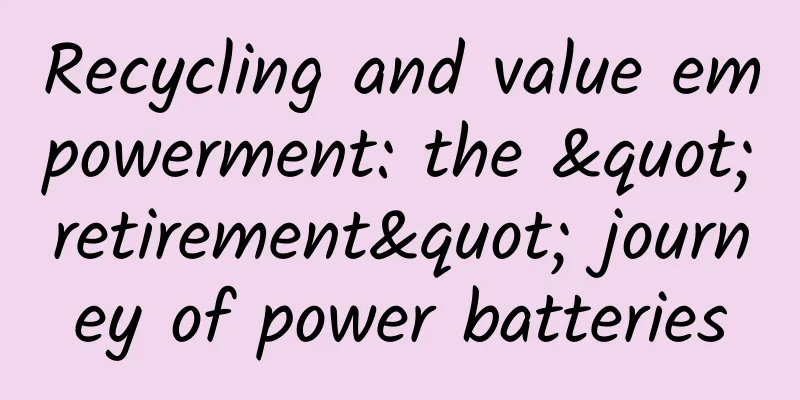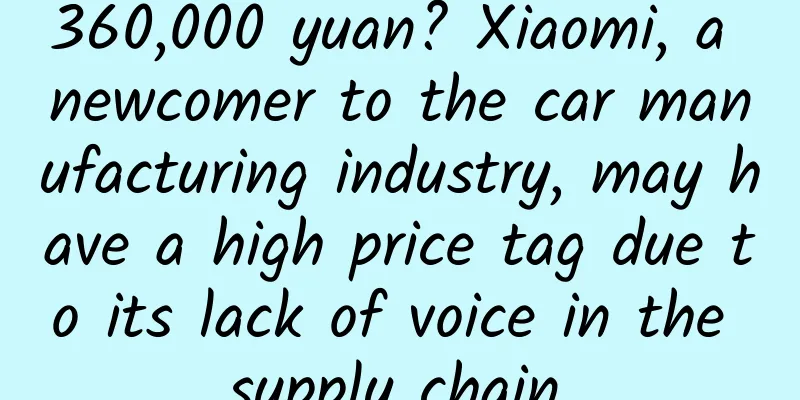Recycling and value empowerment: the "retirement" journey of power batteries

|
This year is the year when the energy shortage phenomenon is most "deeply rooted in people's minds". In the areas of Jiangsu and Zhejiang, the three northeastern provinces and other regions, power outages and "work two days and rest five days" and other production schedule adjustments were implemented to limit production capacity. Whether it is due to the shortage of fuel energy or the constraints of "dual carbon" energy consumption control, it reflects that the energy problem is becoming more and more serious. Clean energy, green energy and sustainable development are the main goals of future economic development of all countries in the world. Among human activities, the transportation sector, which accounts for a large proportion of carbon emissions, is also an important measure for industrial transformation and upgrading to new energy. The "full new energy countdown" has started, and car companies and countries have announced timetables for banning the sale of fuel vehicles. The trend of automobile electrification is accelerating. For traditional fuel vehicles, electric vehicles are not just a competition of the past, but fuel vehicles are entering a situation of accelerated elimination. New energy vehicles are growing rapidly against this backdrop. According to data from the China Association of Automobile Manufacturers, my country's new energy vehicle sales in 2020 reached 1.367 million units, a year-on-year increase of 10.9%, and production and sales have ranked first in the world for six consecutive years. In the first half of 2021, domestic new energy vehicle sales reached 1.206 million units, a year-on-year increase of 2 times. The China Association of Automobile Manufacturers expects that domestic new energy vehicle sales this year will reach 2.4 million units, a year-on-year increase of about 76%. With the rapid development of new energy vehicles, the market size of power batteries and power battery recycling will further expand. Since the development of new energy vehicles in 2014, this year is also the peak year for the retirement of the first batch of power batteries. How to deal with power batteries after they are "retired"? What challenges does power battery recycling face? What is the future trend of power battery recycling? When the first batch of power batteries "died" We know that after repeated charging and discharging, the battery will have capacity decay and shortened life. For the power battery used in electric vehicles, when the battery capacity decay is greater than 20%, it cannot meet the use of the car's driving function. At this time, the power battery faces the situation of "retirement". The service life of power lithium batteries is generally 5-8 years, and the effective lifespan is 4-6 years. According to the analysis of China Merchants Securities Research Report, if calculated based on the 4-6-year service life of power batteries, the power batteries produced in 2014 began to enter the retirement period in batches in 2018. It is expected that my country will usher in the peak period of the retirement of the first batch of power batteries starting from 2021. If the capacity decay of retired batteries is in the range of 20%-40%, it can meet the secondary utilization of batteries - cascade utilization. Generally, it is used in communication base stations, solar street lights, UPS power supplies and other small energy storage fields. If the battery capacity decays by more than 40%, it will be directly dismantled and recycled. The power battery recycling market is also divided based on the battery recycling method: two business models: cascade utilization model and dismantling and recycling. Power battery manufacturers often shoulder the responsibility of power battery recycling. At present, major power battery companies have cooperated with material companies and third-party recycling agencies in the form of establishing strategic alliances and equity participation to deploy battery recycling business. For example, we are familiar with CATL and BYD. CATL entered the battery recycling business as early as 2013 through the acquisition of Brunp Recycling. In 2018, it reached a strategic cooperation with SAIC Group to jointly promote the recycling and reuse of power batteries for new energy vehicles. Lithium battery material companies have completed the industrial closed loop and cost reduction space by recycling key metal resources from discarded batteries. Representative companies include Guanghua Technology, GEM, Huayou Cobalt, etc. In addition to developing their own business and processing layout of minerals and other resources, these companies have also included downstream recycling businesses, broadened their channels for raw material supply in the field of rare metal resources, and ensured stable resource supply and cost stability. China Tower is a representative enterprise of the secondary utilization business model. China Tower cooperates with automobile companies and power battery companies to jointly build and share a recycling network. At present, it has signed strategic cooperation agreements with many new energy vehicle companies such as FAW, Dongfeng, JAC, BYD, and NIO. These cooperation agreements mainly serve the recycling of retired batteries of new energy vehicles. In addition to these formal recycling channels involving large enterprises, there are also some small workshops involved. The Beijing News reported that these small workshops have seized a large market share in the power battery recycling business by taking advantage of price advantages and door-to-door services. However, these small workshops have imperfect technological levels, low resource recycling efficiency, incomplete qualifications, and greater safety and environmental risks. At present, there are 15,000 "power battery recycling" related companies in my country. 2020 was a period of explosive growth in the number of company registrations, with a total of 2,579 companies registered throughout the year, a year-on-year increase of 253.3%. In the first half of 2021, 9,435 new companies were registered, a year-on-year increase of 2,611.2%. There is no gain without profit. Behind the explosive growth of registered companies, they all saw the power battery recycling market with unlimited money prospects. According to data from the China Automotive Technology and Research Center, the cumulative number of retired power batteries in China in 2020 exceeded 200,000 tons (about 25GWh), and the market size reached 10 billion yuan. The recycling market for power batteries is in its infancy. Currently, there are a lot of companies, and no company has emerged quickly. Everyone is still exploring and growing. Industry insiders said that the economic value of cascade utilization is low at this stage, and technology and industry standards have not yet been formed, so there is room for growth and development. Although battery recycling and disassembly has reached a certain scale, it also faces many challenges. Obstacles to recycling power batteries For enterprises, the main reason for recycling power batteries is that they can establish a closed-loop recycling model within the enterprise to achieve the recycling of resources. For the new energy vehicle industry, it also contains huge value worth exploring, which will not only increase the supply of raw materials for enterprises, but also reduce the dependence of enterprises on upstream metal resources. Benefits, value and risks have always been born together. Behind opportunities and wealth, there are also many challenges and risks to be borne. The challenges of recycling power batteries are mainly related to battery technology and structural materials. The first is the restrictions imposed by power battery manufacturers on the confidentiality of battery technology and commercial information. We know that for battery manufacturers, the power management system in the battery is key technical information, so corresponding reading permissions will also be set. When the battery capacity drops to a point where it cannot support the driving of electric vehicles, recycling companies need to re-test the battery life and wear. This increases the difficulty and cost of recycling. Secondly, there are limitations brought by the battery materials themselves. There are a lot of heavy metals and other harmful substances in power batteries. For example, the nickel, cobalt, and manganese elements in ternary batteries are all biologically toxic. Improper handling will damage the ecological environment. When dismantling, sorting, repairing or smelting waste batteries, extracting metal elements such as lithium, cobalt, nickel, and manganese, there are requirements for extraction process level and pollution prevention and treatment. The polluted materials in the battery must be handled by mature technology and equipment, and these facilities need to be upgraded to reduce the occurrence of accidents. Finally, the industry's norms and policies need to be clarified. There is no industry standard for power batteries themselves. The model and efficiency of each battery are different, and the standards and systems for evaluating them are not sound. This has also led to an unclear pricing mechanism, which has caused small workshops to disrupt the market. Batteries are informally purchased and disassembled by small workshops, and even cause regional environmental pollution. The recycling process is not effectively supervised. It is understood that less than 30% of the retired batteries actually flow into leading enterprises, and a large number of retired power batteries flow into informal channels, showing a chaotic recycling situation. The batteries that flow into small workshops are processed and made into small power banks, or even simply processed to pass as new batteries, and precious metals are extracted by primitive methods, etc., which brings hidden dangers of safety and environmental pollution. At present, the mainstream power batteries are mainly ternary lithium batteries and lithium iron phosphate batteries. However, the first batch of retired power batteries are mainly lithium iron phosphate batteries. In terms of economic benefits, lithium iron phosphate batteries are mainly used for cascade utilization, and the benefits of recycling and disassembly are not high. However, since ternary batteries contain scarce metals such as nickel, cobalt and manganese, these metal elements can be extracted to process the positive electrode materials of the battery, and the recycling and disassembly value is higher. However, it will take some time for ternary batteries to be retired, which also means that the current profit from recycling batteries is not as great as expected. The dawn of the entire industry will take time to brew, and there is still a long way to go in recycling power batteries. The future of battery recycling: energy storage and recycling In the context of carbon emission reduction and the ban on the sale of fuel vehicles, the development prospects of new energy vehicles are limitless. According to data from the Ministry of Public Security, as of the end of June this year, the number of new energy vehicles in China reached 6.03 million, accounting for 2.06% of the total number of vehicles. As the peak period of power battery retirement approaches, the power battery recycling market has also become noisy, becoming an important link in the development of the new energy vehicle industry chain. The cooperation between upstream and downstream of the power battery recycling industry chain is an inevitable trend of development, because the entire power battery recycling process involves many complex links, which requires the coordination of upstream and downstream enterprises in the industry. For example, for car companies at the consumer end, direct connection with consumers can attract traffic in terms of channels, while their disadvantages regarding battery reuse and material manufacturing capabilities can be cooperated with battery companies. More and more car companies will also participate in the "cooperative alliance" model of battery manufacturers, material manufacturers, etc. as the cascade utilization market opens up. In the cascade utilization of power batteries, in addition to being used in low-speed scenarios and communication base stations, no good products have been developed for the utilization of energy storage, but this direction is still an important plan and exploration in the future. Previously, Brain Pole mentioned the content about energy storage in the future travel mode. For intermittent energy such as solar energy, wind energy, hydropower, etc., these energy sources are very good clean supplementary energy, but because the acquisition requires corresponding conditions, a lot of resources are wasted during the peak period of energy acquisition. If the development of energy storage technology can effectively utilize these cascaded batteries, store and integrate renewable energy, and feed back to new energy vehicles, it will also make a great contribution to the effective use of resources. For the power battery industry, the biggest limitation is that there is no uniformity in the industry's specifications, standards, and technologies. Whether it is the replacement and replenishment method of new energy batteries or the recycling process, it has brought considerable costs, especially bringing resistance to the development of the industry. A large part of the difficulty in regulating power battery recycling is related to the inconsistency of the industry's evaluation system and standard model. The standardization and unification of industry standards are the core of its future development. Programmatic documents, normative policies, etc. need to be further improved and implemented to end the chaos in the market and allow the battery recycling market to have a virtuous cycle. The recycling value of power batteries is self-evident. Whether it is creating profits for enterprises and industries, or contributing to energy conservation, emission reduction, and environmental protection, it plays an important role in the development of a green economy. As the industry's standards continue to upgrade, more and more batteries are gradually entering the retirement tide. The planned production capacity and benefits of power batteries will be gradually realized, providing value to the entire industry, nourishing the growth of the green economic ecology, and significantly reducing carbon emissions from human travel activities. |
Recommend
This sentence you have been told since childhood may be destroying your health
Our parents have always emphasized this to us sin...
The content ecology and business logic of Tik Tok, Kuaishou, Weibo, and Bilibili
This article analyzes the content ecology and bus...
So bad? iOS 11 system update has too many bugs
Last year, when Apple released iOS 11, it said th...
Did you know that people who love to chat are less likely to develop dementia?
Author: Sun Taixin, Chief Physician, Beijing Elec...
iOS15 Beta5 update, many new improvements, but not recommended
The update package is 6.0.5GB, which may vary sli...
Does eating avocado make you fat or lose weight? Are there any alternatives?
Avocado, also known as alligator pear, oily pear,...
Is immunity testing really reliable?
Is immunity testing reliable? This is a hot topic...
Pakistan's automobile market has great potential and many car companies have entered
According to Nikkei, Pakistan's auto market i...
The teeth you use to eat may have been fish scales a long time ago!
Did you know that the emergence of teeth is one o...
The beauty of the seasons: Beginning of Autumn丨Is Beginning of Autumn also divided into “early” and “late”?
Xinhua News Agency, Tianjin, August 7 (Reporter Z...
As a mechanic, he is obsessed with land. He bravely ventured into uninhabited areas just to create the "Oasis Miracle"
“The area of desertified land in my country is ...
Implementing system sound recording in Android-RK3399 development board source code modification
Preface I have been recording system sound these ...
From Li Jiaqi's IP: The "hidden rules" of cross-platform account operations
In the Internet age, information flows faster and...
Magneti Marelli to be at CES 2024: Discover a journey of design-led innovation
Co-create with Magneti Marelli to personalize you...
ReactNative native module development and release--iOS
[[166181]] I made a ReactNative App some time ago...









